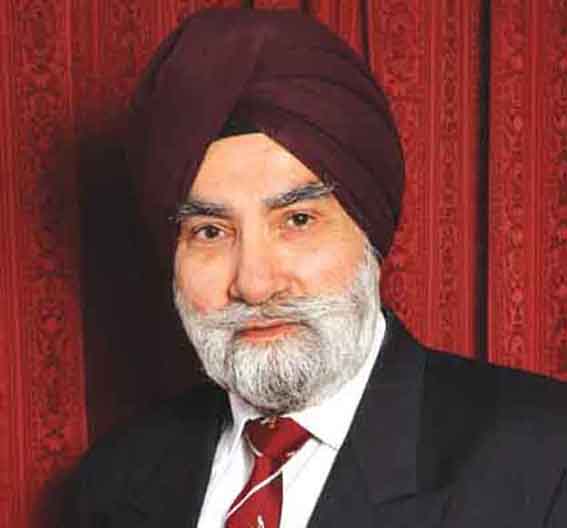Three Lessons for World Religions to Learn From Martyrdom of Guru Tegh Bahadur

ਤੇਗ਼ ਬਹਾਦੁਰ ਸੀ ਕ੍ਰਿਆ ਕਰੀ ਨ ਕਿਨਹੂੰ ਆਨਿ ॥
None in the Universe ever performed as noble a deed as did Guru Tegh Bahadur (Guru Gobind Singh)
The Guru taught three lessons to World Religions which finalised the emergence of the Khalsa Panth as Tisra Panth - the Third Distinct Path after Abrahamic and Indic religions.
Lesson One through Emperor Aurungzeb: Do not seek converts by using force, fear or false attractions. Lesson Two through own Sikhs martyred with Him: Be prepared to defend your own faith (Truth) with your life. Lesson Three though leading Brahmins of northern Indian subcontinent (not just Kashmir) who pleaded for His help : Be prepared to defend the defenceless regardless of their faith (religion) with your life if need be.
It was in that sense that the sacrifice of Guru Tegh Bahadur was Unique among the great martyrs of the world. The deep foundation of the edifice of the Khalsa Panth laid by Guru Nanak Sahib had been built upon by the lived Sikhi of the earlier Guru-personalities of One Guru Jot and Jugat (Divine Light and Method). The time had come for the second Guru martyrdom after Guru Arjan Dev to be followed later by Sarbans Daani, Guru Gobind Singh. The emergence of the Khalsa as the saint-soldier was the final step. By defeating the will of the fanatic Aurungzeb, Guru Tegh Bahadur had shown that one who has conquered self and the fear of death within, is the ultimate warrior. Guru Tegh Bahadur taught that lesson to his Sikhs and the evil empire started crumbling before the egalitarian ideology of Guru Nanak. Abolition of caste and men-women inequalities increased the resistance power of the Khalsa manifold.
During and following the 400th Parkash celebrations, it seems India and even some misguided Sikhs themselves have re-discovered the immense contribution of Guru Tegh Bahadur. This was after classroom history distortion by Indian NCERT historians so far Sikh history is concerned, especially the life, mission and martyrdom of Guru Tegh Bahadur. Sikh parcharaks, too had confined the most widely travelled Guru after Guru Nanak Sahib to meditation in a bhora at Bakala. All have started re-discovering Guru Tegh &ndash The True Story. (also the title of my research through the Sikh Missionary Society UK).
Other main points of the True Story are:- The Guru was arrested or detained three times. Contemporary evidence from Assamese Buranji (chronicle) confirm that the first arrest which eventually led to the martyrdom, was following complaints from the Brahmins and Ulema of northern and eastern Indian subcontinent against the extensive and prolonged preaching tours of the Guru. He preached against ritualism at Hindu centres and forced conversion by Islamic zealots. People were taught fear no one. That defence of human rights was construed as rebellion. Aurangzeb was personally at Delhi when he ordered the execution of Guru Tegh Bahadur. Contrary to false stories told by some parcharaks, Delhi Sikhs played a daring and well-planned part following Guru Tegh Bahadur&rsquos execution.
Guru Arjan completed the first stage of the Guru mission. Guru Hargobind was the architect of the strategy to be followed by his successors. Guru Tegh Bahadur provided the bridge supporting Gurus Har Rai and Har Krishan, to hand over to Guru Gobind Singh to complete the Guru Jot-Jugat mission.
Gurmukh Singh OBE
Principal Civil Servant Retd UK